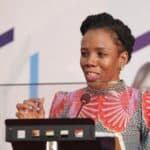How do you show evidence of student learning throughout the year? It’s probably through a combination of tests, written work, group work, artwork and oral reports. But to encourage student agency and better engagement, many IB teachers are turning to student-led assessments. Here, Wendy Choi, learning in assessment manager at the IB, discusses how this can be done successfully.
Wendy’s role is to keep up with the latest research and global best practices in assessment for formative purposes and support and celebrate these effective practices in the IB Community.
“The majority of IB teachers would have tried some form of student-led formative assessments in their classes”, she says. “Then of course this may vary depending on the part of the world they are in or the school culture. In some schools, student-led assessments are actually the more common form of classroom assessment”.
Wendy continues: “In IB classrooms, teachers demonstrate a lot of agency in designing, implementing and giving feedback in assessments for formative purposes, which includes giving students choices in assessment whenever it’s helpful.”
What does student choice involve?
The primary purpose of formative assessments is to help teachers and students make inferences of their learning, so as to provide feedback that moves learning and teaching forward.
“Providing more choices in student assessment helps promote student agency and self-efficacy.”
One form of student-led assessment is student-generated questions or assessments, where students take ownership of their learning by designing the assessment task or questions themselves. They then decide how to evaluate these tasks and co-construct the criteria and provide feedback to their classmates through peer assessments.
IB teachers can also provide students with the choice of designing open-ended assessment tasks that allow students to express their skills and knowledge in multiple ways. “For example, the use of a process portfolio or exhibition encourages students to express what they have learned in a way that they feel could best demonstrate their understanding”, says Wendy.
“For some students this may be expressing their thoughts in a written and numerical way, while for others they may prefer to show their conceptual understanding in a more visual and artistic way”.
Teachers can try to personalize assessments by tapping into students’ strengths and interests. “For example, a Diploma Programme (DP) theory of knowledge (TOK) teacher asked their students to create a digital formative assessment task by making and sharing either a:
Two-minute video.
Podcast.
Infographic.
One-page summary.
The tasks were assessing the same key construct, that is the students’ understanding of the TOK ways of knowing and areas of knowledge, and their connection to real-life examples”.
Being developmentally appropriate
Student choice in assessment is suitable for all age groups, as long as the tasks are developmentally appropriate. For example, the Primary Years Programme (PYP) exhibition, Middle Years Programme (MYP) personal project, Career-related Programme (CP) reflective project or student-led assessments in DP classrooms. Wendy says, “we can see that students in different age groups are capable of making choices in assessment and choosing a mode of expression that aligns with their strengths and interests and that could help them best display what they have learned”.
Benefits and challenges
Providing more choices in student assessment helps promote student agency and self-efficacy as students take ownership of their learning, according to Wendy. “It can also reduce assessment biases, as we ensure that we are assessing the key concepts and skills that we want to assess and not secondary skills such as students’ ability to express and organize their thoughts in essay writing”. This is especially important in a classroom of diverse learners who may not be responding in their first language or have different prior experience in critical reading and writing.
“Students need guidance and training on how to engage in peer and self-assessments.”
It can support the development of conceptual understanding in students as they are encouraged to express their knowledge and skills in multi-modal ways, research has shown.
Moreover, the use of student-led assessments and engaging students in peer assessments can also help them internalize success criteria and enhance their evaluative judgement, according to a recent study published in the European Journal of Psychology of Education. “In other words, students will be better prepared to understand ‘what is good’ and to reflect on the quality of their work and that of their peers”, Wendy explains.
However, Wendy reminds us that it is important to make sure when providing students with more choices, the assessments are somewhat comparable.
Students should have equal opportunities to focus on their strengths but also areas that need further improvement, so they continue to have a diverse and holistic assessment experience.
One way to ensure that these methods are successful is to give students practice in designing student-generated questions or student-led assessments. Students also need guidance and training in how to engage in peer and self-assessments and give helpful feedback to one another.
“In order to ensure a certain level of comparability even when student choice is built into the tasks or questions, it is helpful for IB teachers to make explicit the primary and secondary skills required in a task”, says Wendy. “Then, it becomes much easier for them to allow different forms of assessment and multi-modal responses as long as the questions or tasks assess the same key construct (primary skills) and are measured in the same way”.
Having a set of clear and consistent assessment criteria as shown in this IB World Magazine article also supports teachers and learners to provide feedback according to the same standards.
Involving the school community
Many IB teachers are engaging parents and guardians in conversations on what makes good assessment, sharing with them research and evidence from their classrooms of how student agency in assessment supports learning.
Some parents encourage the idea of more student agency in assessment, while others may be used to more traditional ways of teacher-led assessments and would need more help in understanding these different approaches to assessment.
“We have seen many parents and the wider education communities embracing these changes and showing deep understanding of the research, such as understanding that good assessments for formative purposes are not necessarily generated or marked by teachers, and that the most effective feedback is sometimes ‘comments without a grade’”, says Wendy.
There is definitely a place for student-led assessment in education when implemented well. Wendy concludes that the IB’s vision is that students, “will benefit from a holistic assessment experience throughout their IB education, and that their sense of self-efficacy and agency are enhanced in the process”.

Wendy is a Learning in Assessment Manager at the IB. Her role focuses on research and policy support on the principles and practices of formative assessment. She is a professionally trained education psychologist and liberal studies teacher and has served in a number of schools, non-profits, government and international organizations. Her professional interests are in the areas of assessment for learning, education research and interventions, student wellbeing and learning diversity. You can connect with her on LinkedIn here
If you enjoyed this story, consider reading more below:




